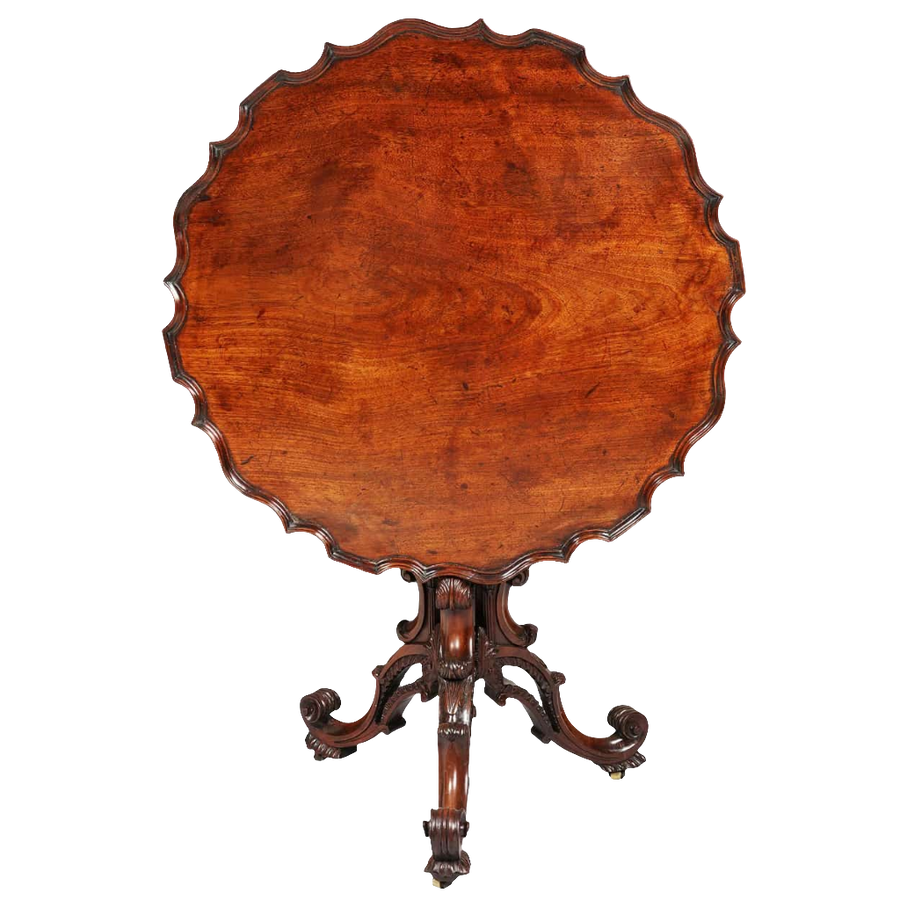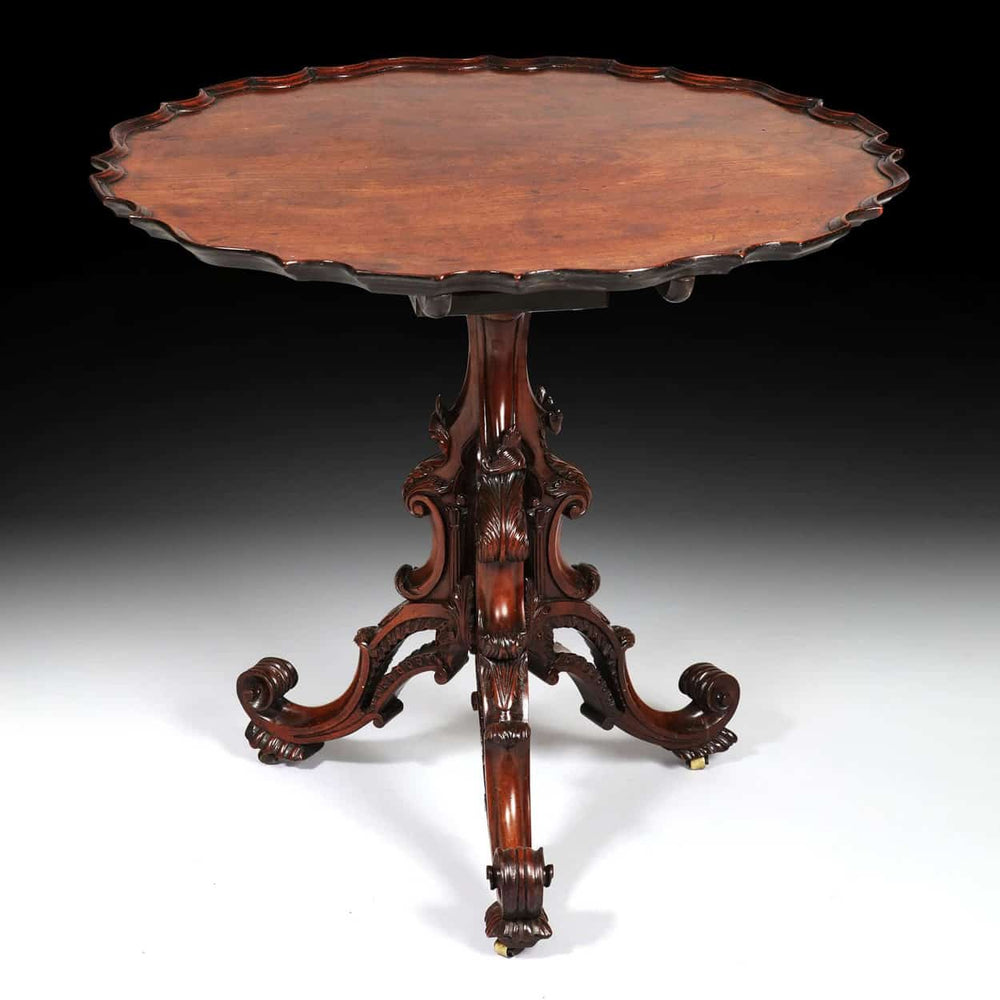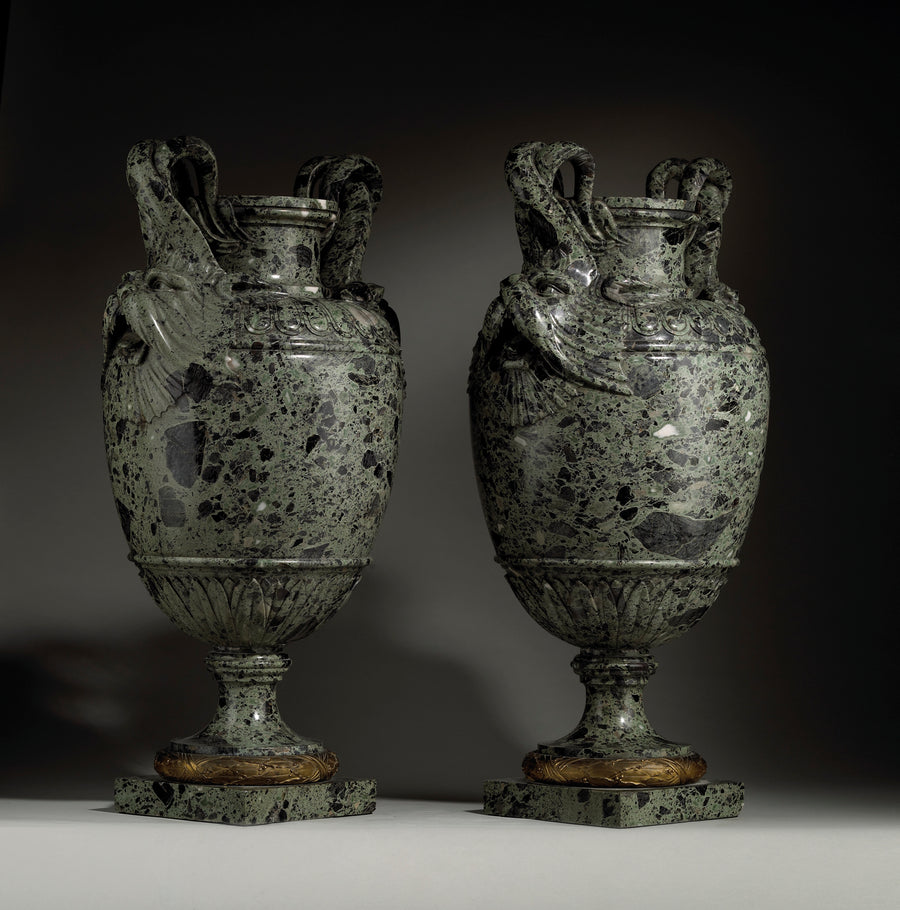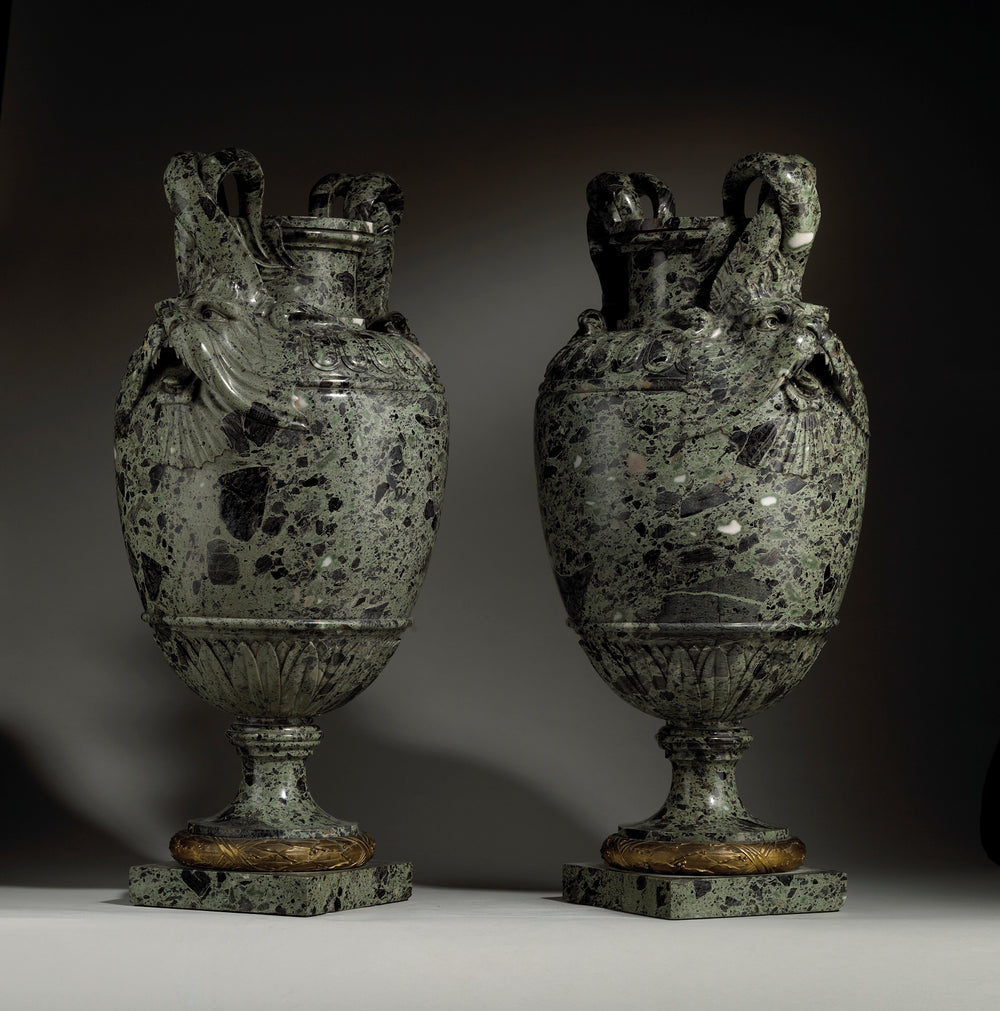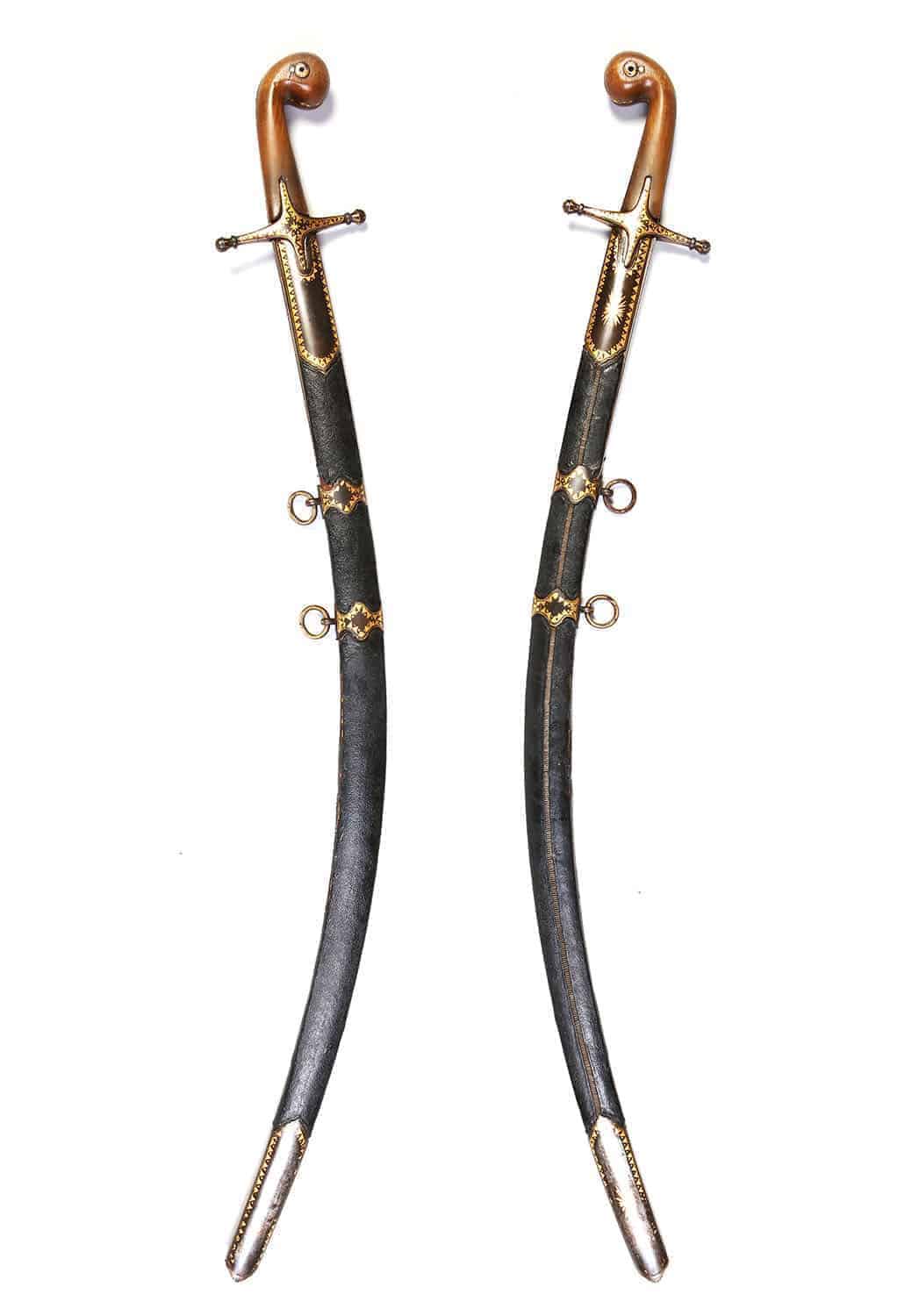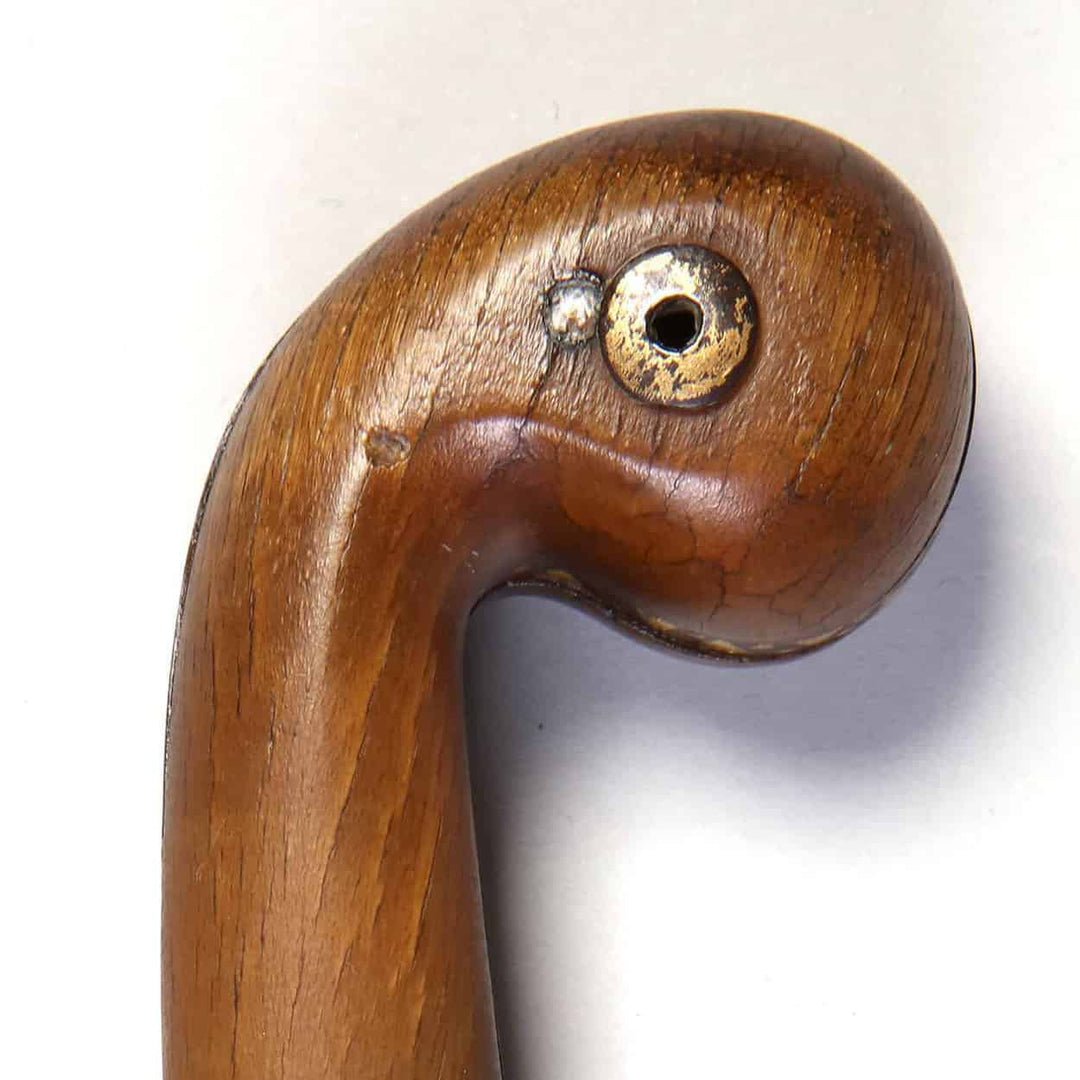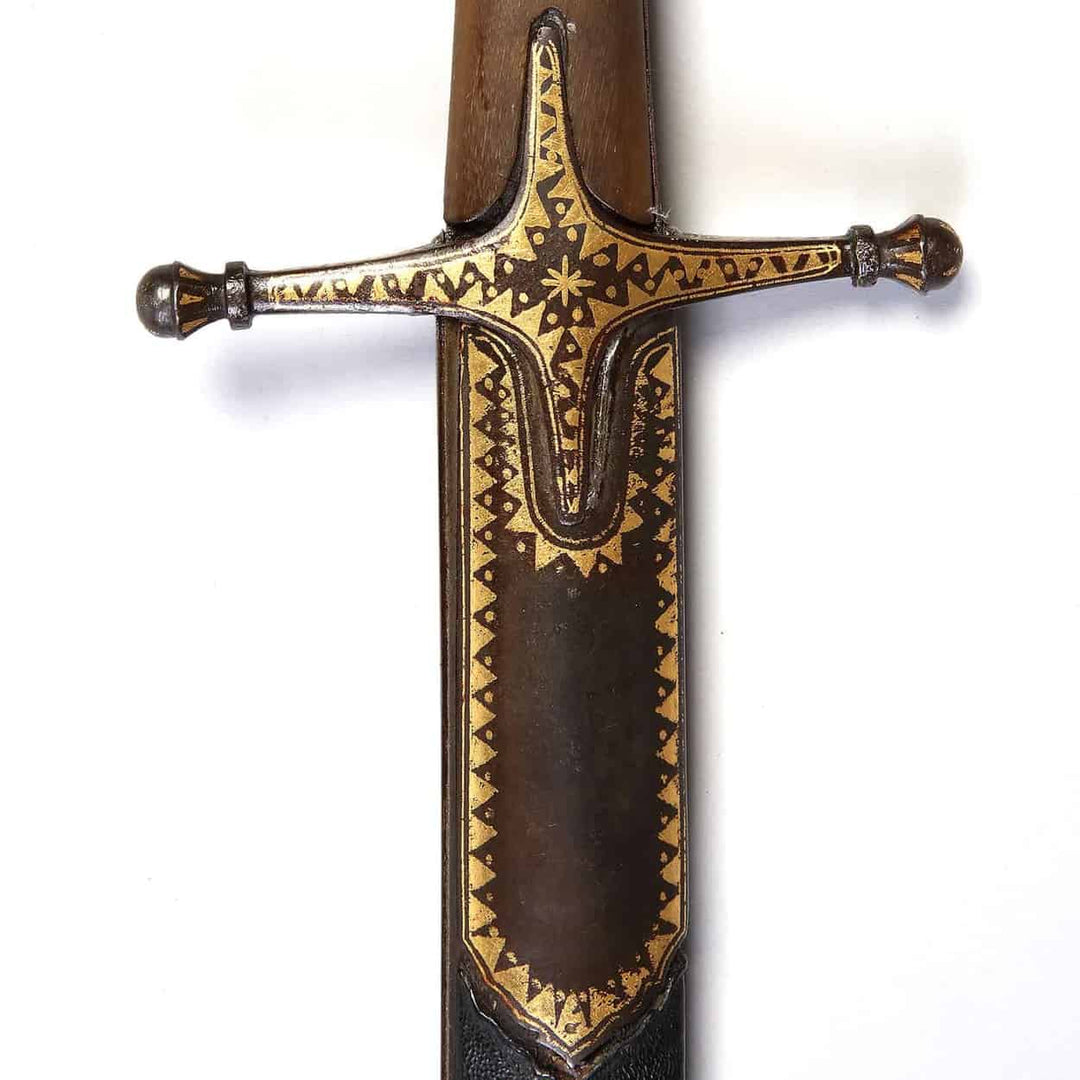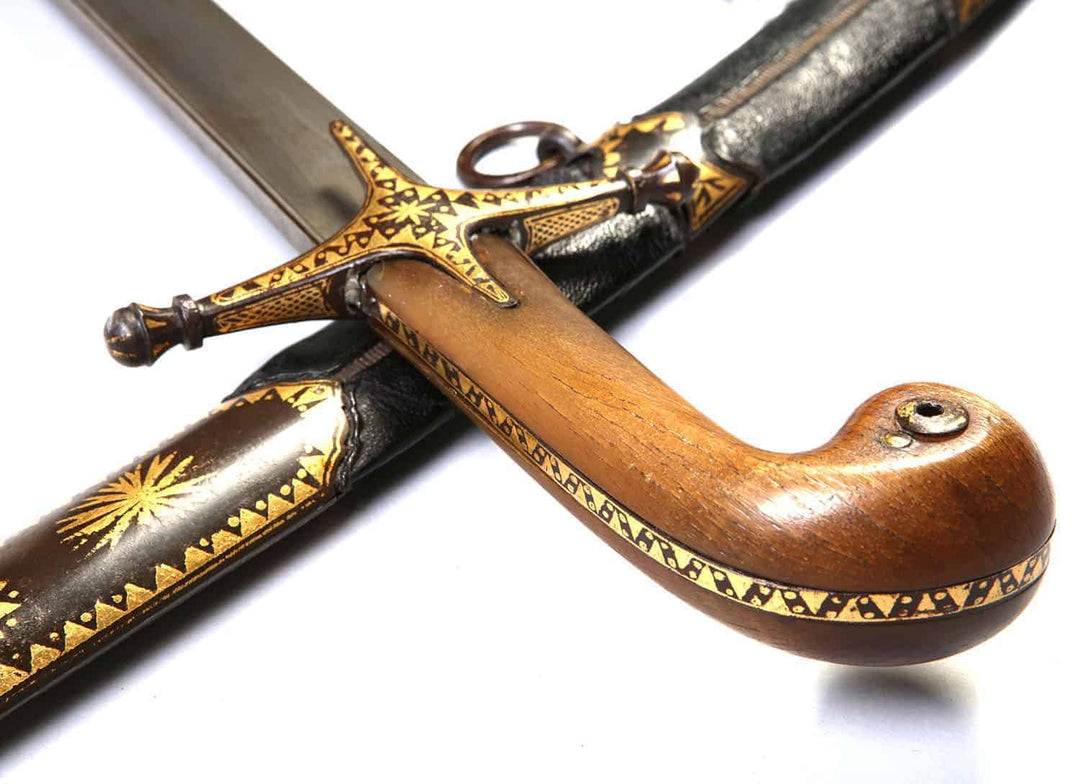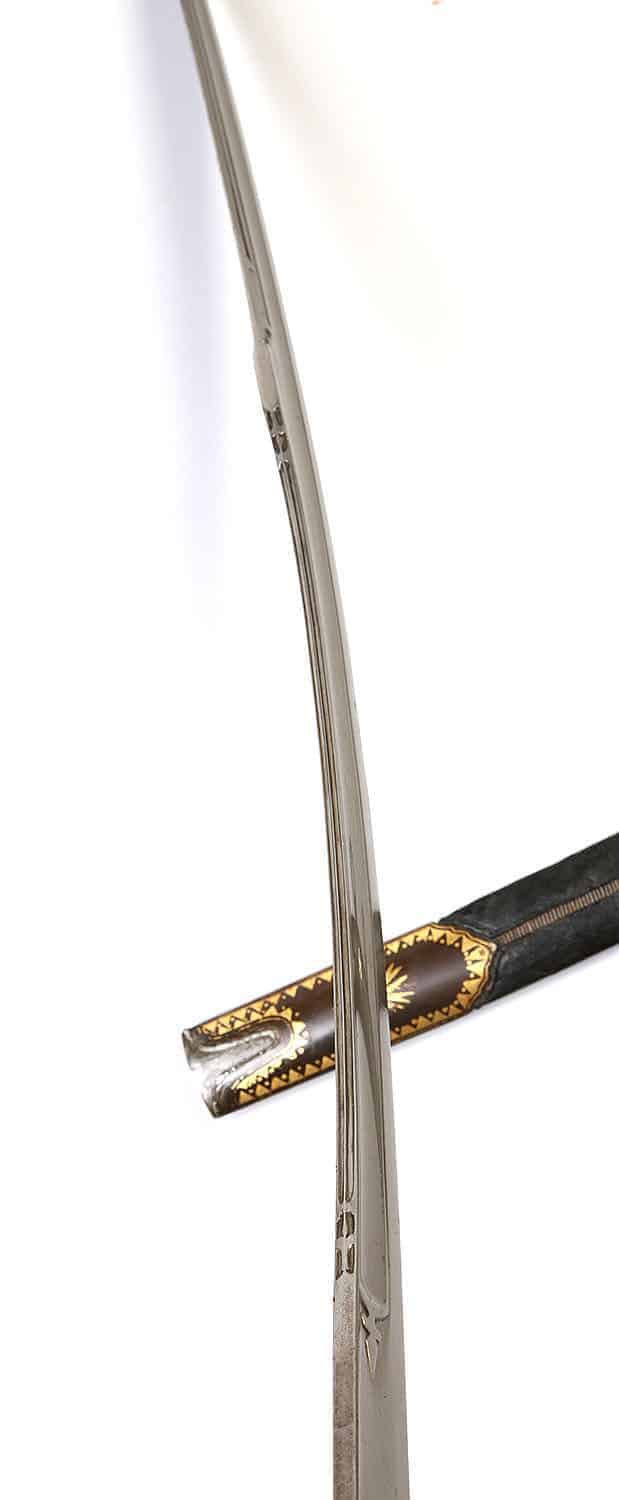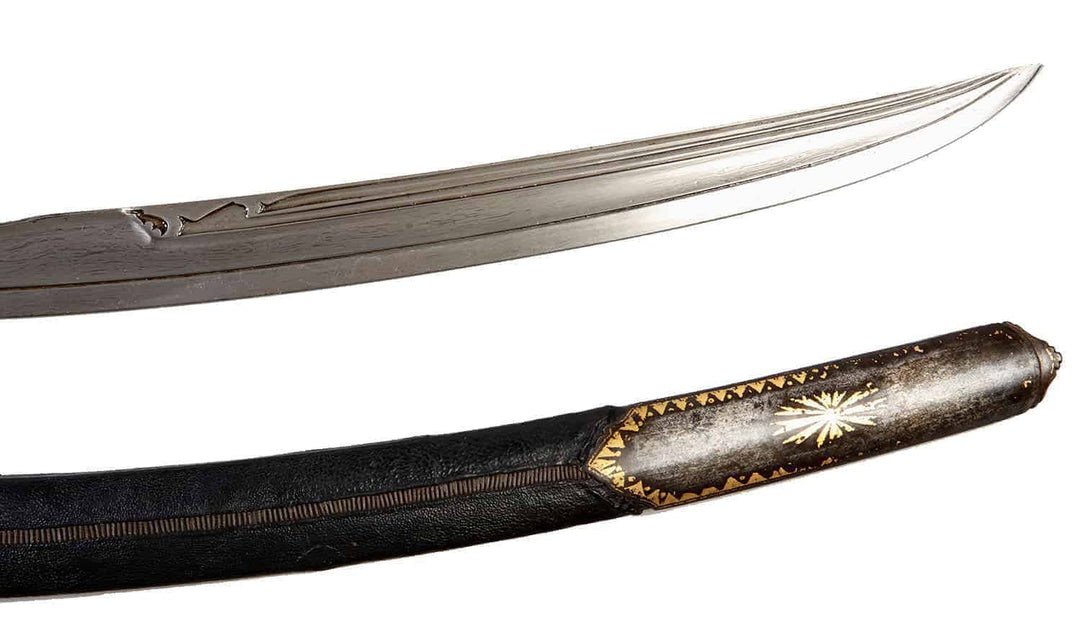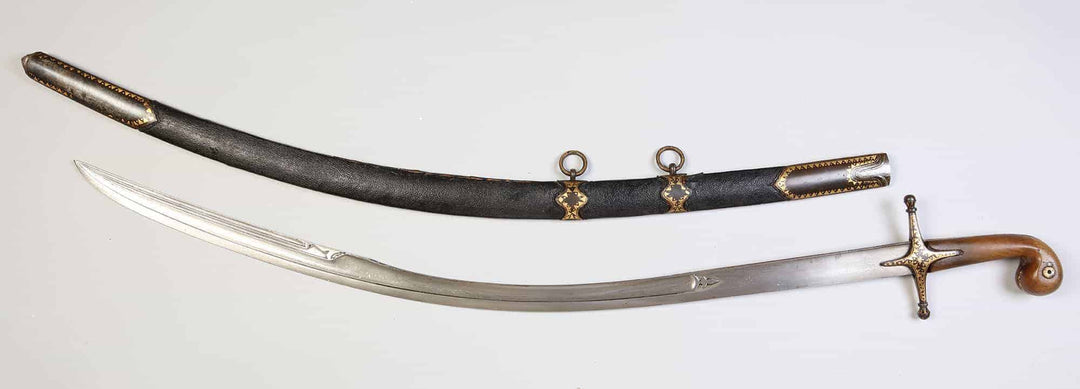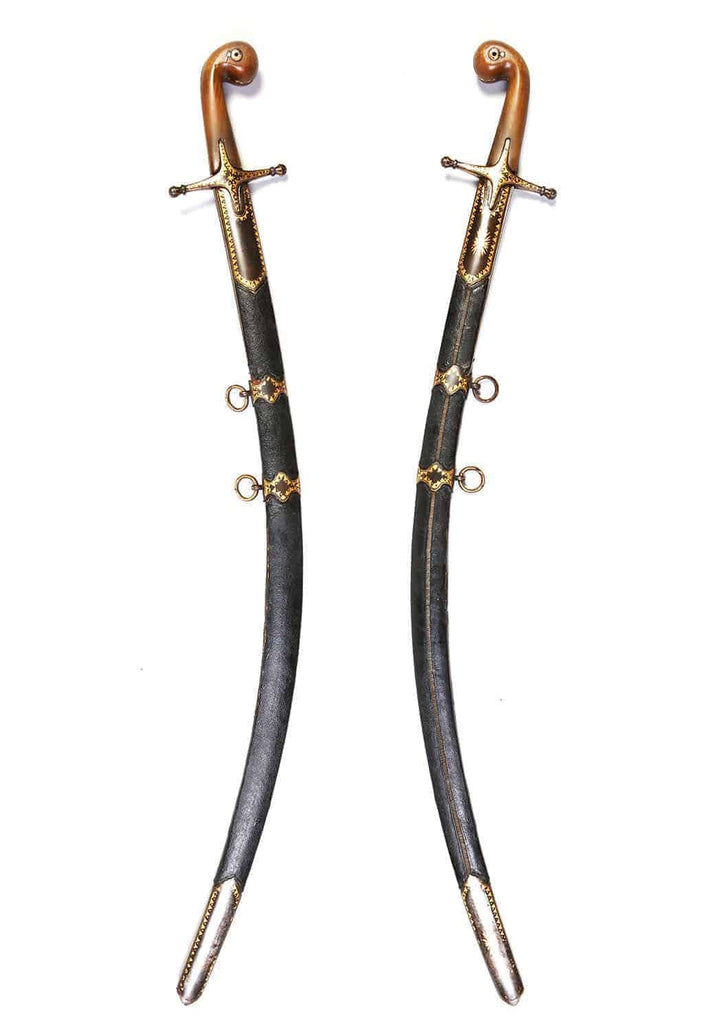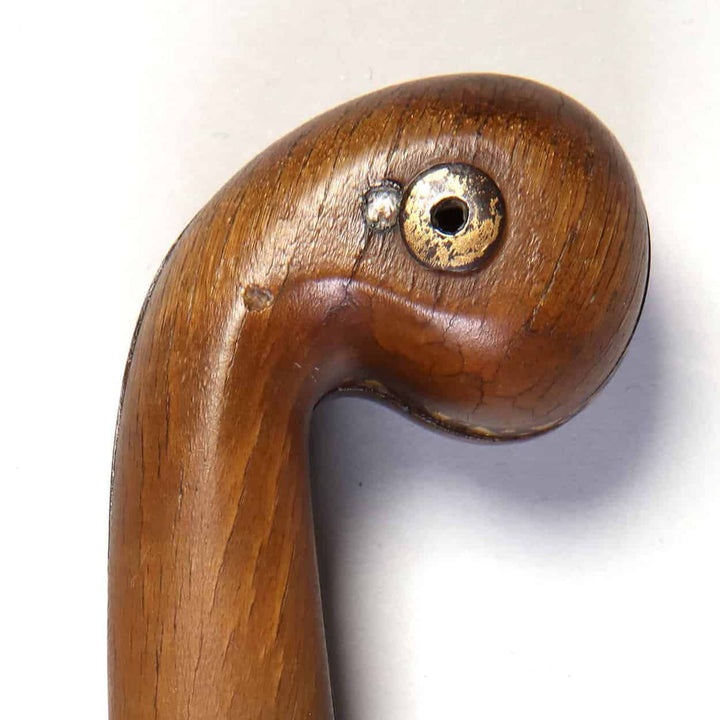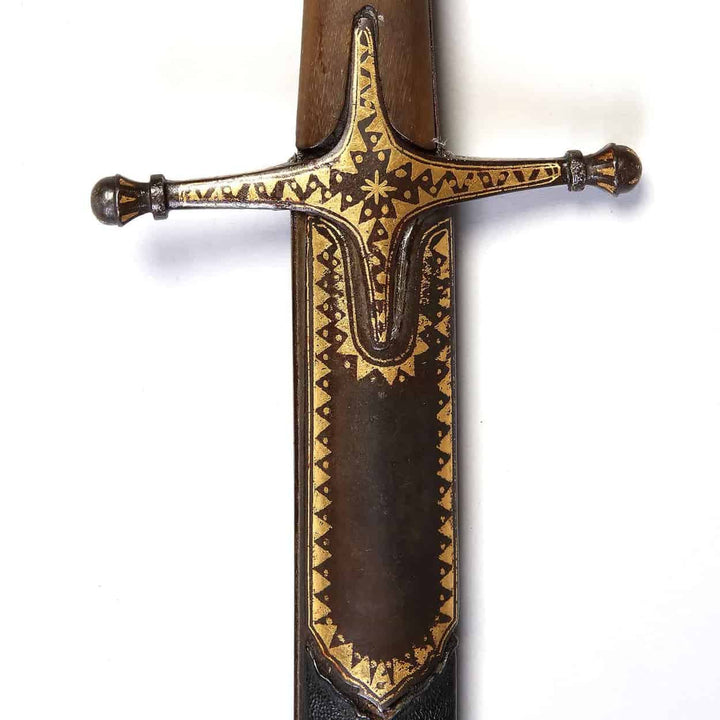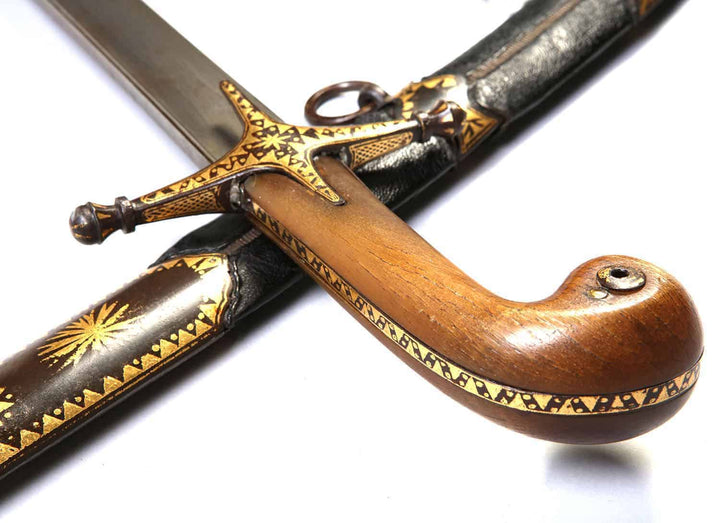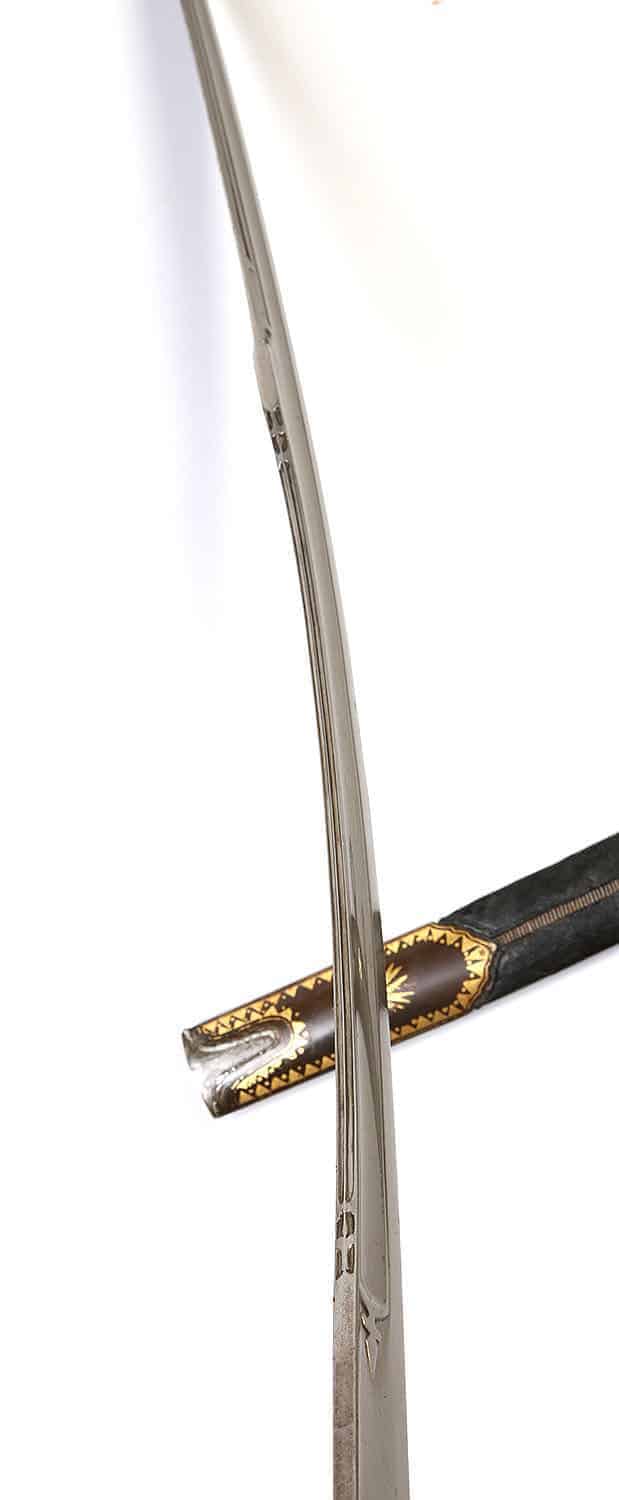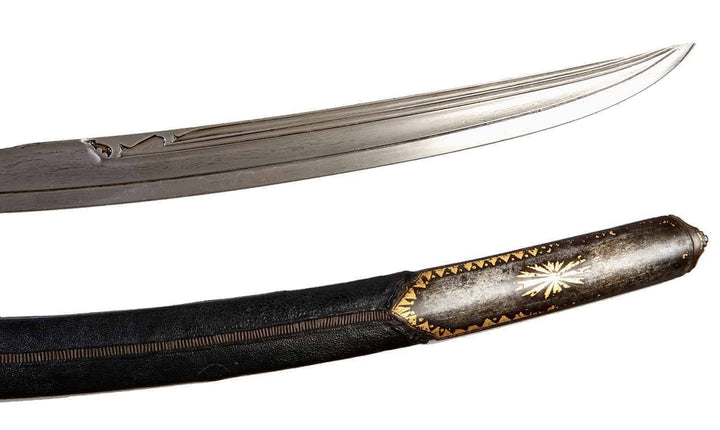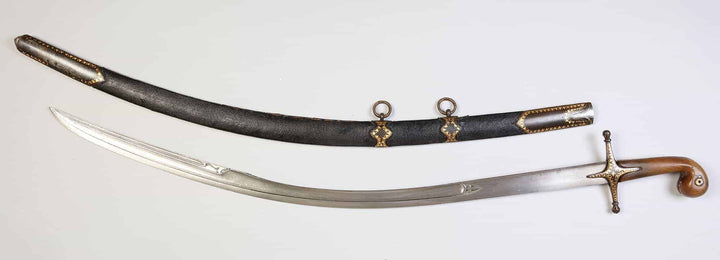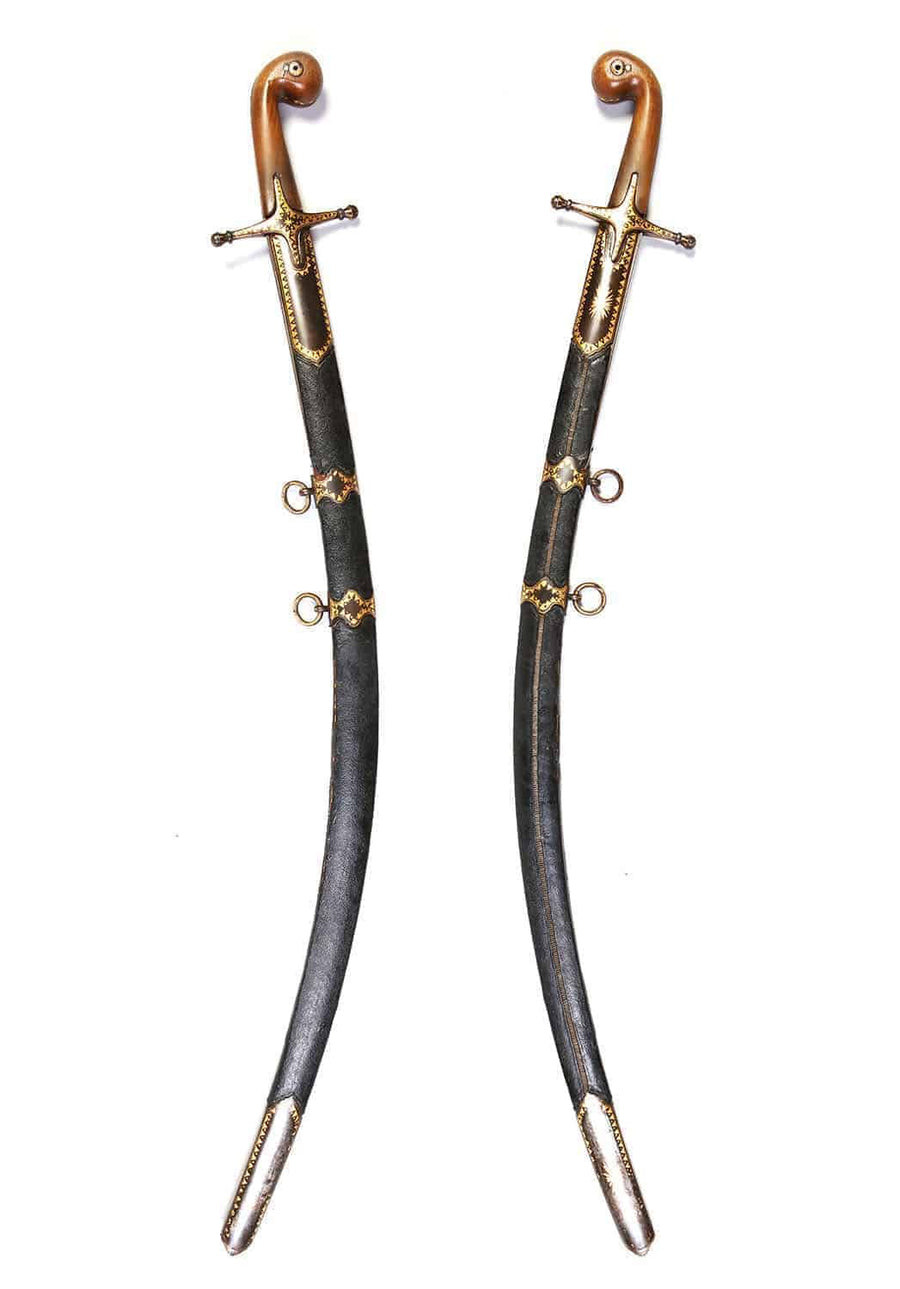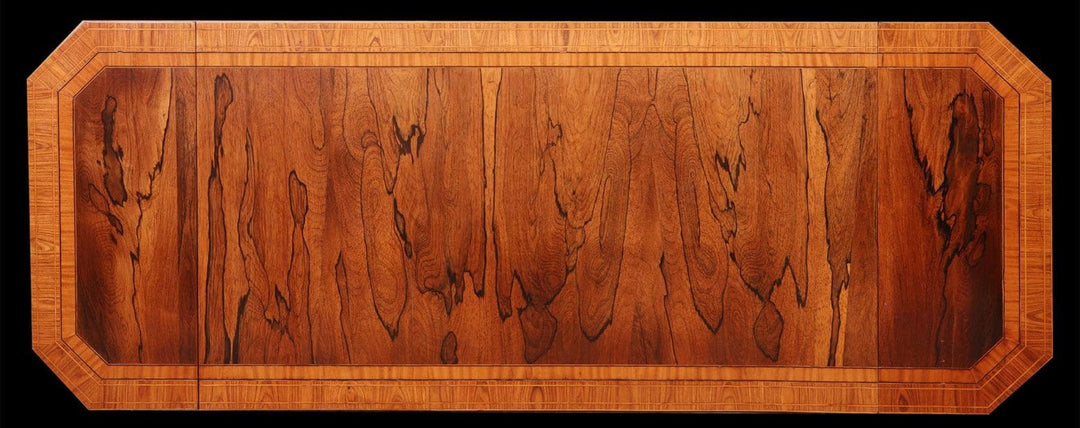FINE OTTOMAN SHAMSHIR
An exceptional example of Ottoman artistry, this fine Ottoman Shamshir dates to the early 19th century and is a quintessential representation of the period’s craftsmanship and martial elegance. The piece embodies the stylistic and functional innovation characteristic of the Ottoman Empire’s celebrated weapon makers.
Origin: Turkey
Date: Early 19th century (circa 1830)
Material: Watered steel, horn, gold
Dimensions: 103 cm (40.55 inches) overall length
Condition: Very well preserved; horn hilt in excellent condition, gold inlay mainly intact, original scabbard present
The Ottoman shamshir stands as a testament to the enduring legacy of Eastern arms, and this particular specimen is a remarkable survivor. Similar shamshirs can be found in eminent collections and cited in scholarly literature, such as Hales and Khorasani, affirming its historical relevance. The 'shamshir'—meaning 'lion fang'—denotes the distinctive highly curved blade, a design that soared in popularity throughout the 18th and 19th centuries for its formidable effectiveness and sweeping, graceful lines.
Notable Features:
-
Exquisite Craftsmanship:
- The blade displays beautifully patterned watered steel, visible across both faces, creating an arresting high-contrast visual effect.
- The horn hilt, shaped in the traditional 'pistol' grip, demonstrates excellent colour and an absence of cracks or damages.
- Elaborate gold koftgari—Ottoman gold overlay decoration—remains more than 90% intact on the tang, quillons, and quillon block, highlighting the sword’s luxurious details.
-
Design Significance:
- The deeply curved blade epitomises the flowing, organic forms lauded in Ottoman arms design.
- Broad quillons and an extended hilt allow for single or double-handed wielding, a distinct Ottoman refinement on the classic shamshir profile.
-
Collecting Value:
- Rare as a complete set, with its original wooden scabbard covered in black hide and matching gold-decorated mounts and lockets. Such completeness enhances its desirability among collectors of collectible swords.
- Its provenance, design features, and highly preserved gold inlay render it an outstanding find for specialists in Islamic or Ottoman military artefacts.
-
Practical Value:
- This fine Ottoman shamshir is exceptionally well suited for prominent display within a collection of Eastern arms, serving as both a centrepiece and a focus for further study of 19th-century Ottoman weaponry.
A distinguished addition for any collector with an interest in collectible swords or Islamic works of art, this fine Ottoman Shamshir offers a rare opportunity to acquire a historically and aesthetically significant weapon from the Ottoman Empire, admirable for its artistry as well as its storied past.
At Nicholas Wells Antiques, we take great care in preparing each piece for delivery. As every antique is unique, custom packaging and handling are essential to ensure safe transit. Only once we have checked each item and wax polished them do we aim to ship your order. We will notify you by email once it has been dispatched. Delivery times may vary depending on the item and your location.
Please contact us for a tailored worldwide shipping quote.




